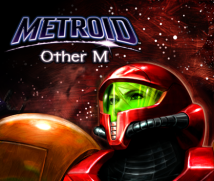5. Pulling on People´s Heartstrings
You’ve both been involved in making games for many years now. In making games, what has been your belief on how you can have an effect on on people’s emotion? What do you think, Sakamoto-san?
As I mentioned in my speech at the GDC23, there are certain elements that are required when I try to touch and move the players’ hearts: Firstly, you need to create a mood. You then need to make sure that all the plot foreshadowing is tight, and that the ‘timing’ is correct. The other element that’s required is... Erm... What was it again...? 23 GDC is the acronym for the Game Developers’ Conference. It is the world’s largest conference aimed at game developers, and is held annually in the USA. Sakamoto-san’s presentation at the GDC is introduced in part 6.
‘Contrast’, wasn’t it?
Ah yes, that was it. (laughs) I think that if these techniques are well-controlled within the flow of the story, people can be surprised or scared; can laugh or even be moved to tears.
Sakamoto-san, you think that players’ tears, their chuckles and their feelings of shock all exist in the same domain, and this is an area you enjoy exploring as you make your games, is that right?
Yes. The point is that when people are emotionally moved, or when they laugh or are scared or angry, they are essentially having their emotions manipulated by some kind of stimuli. In this sense, the structure, shall we say, has a kind of logic and is the same for everybody: there is some kind of build-up, and when things occur with the best possible timing, the emotion is amplified to the maximum. When it comes to this structure, funny things and scary things are essentially the same.
So, that’s why you said at the GDC that your wide range of creative endeavours actually all have exactly the same roots, then, Sakamoto-san?
That’s right. Also, and I don’t think I mentioned this as one of the elements at the GDC, but ‘the resonance of words’ is also something that I think should be considered extremely important.
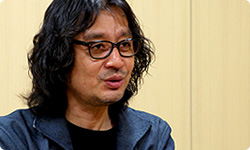
Oh yes.
I’ve always been the type to be really obsessed with words. I even took care of the entire script for Other M - that’s how important I consider ‘the resonance of words’.
When it comes to the resonance of product names too, once Sakamoto-san thinks ‘this is it!’, he insists on it very strongly, even though he can’t give a theoretical explanation for it.
That’s because resonance is something that’s difficult to put into words, isn’t it? It’s not a matter of theory.
There are definitely times when even the slightest mistake with the timing can spoil everything. Surprisingly, though, such things are sometimes not noticed by the people actually working on the game. You therefore need to be really thorough in making adjustments to things like this, which is why it was necessary for me to get directly involved with the development of Other M.
That’s why you had to go around asking people at the other company ‘who’s going to be the last to leave today?’. (laughs)
Yes. (laughs) As you can imagine, I had to work late into the night to prepare the next day’s work for the people who gave shape to my ideas, otherwise development wouldn’t have run efficiently. There is no point in creating an allusion that can’t be spotted by the players, for example. There were times when we’d gone to the trouble of creating scenes that should have really tugged at the heartstrings, but I’d have to say ‘it just not the right atmosphere for this thing to happen’. They’re really subtle issues, but if you don’t completely control everything about them, including the music, I don’t think you can create something that could touch and move players’ emotions within the overall flow of the game.
Such subtle issues add up to become really important, don’t they? What kind of things are you conscious of, Sakaguchi-san?
I actually read an article about Sakamoto-san’s speech at the GDC, and it made a bit of an impression on me. ‘Ah, ‘contrast’ certainly is important’, I thought.
‘Contrast’... The word I forgot about today. (laughs)
(laughs) I hadn’t thought of the idea of ‘contrast’ before, but it certainly is important.
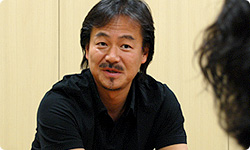
Clearly expressed contrast can really jolt the emotions, wouldn’t you say?
Yes, that’s right. There are also places in games, such as the moment when you open a castle door for the first time, when you think, ‘I’d like some story here’. For The Last Story, especially because I wasn’t making it using my usual method but rather started by implementing the game systems, there were times when I’d have to begin by finding such places. The story I wanted to tell was already complete, of course...
You mean you were thinking about how to attach the story to the game structure?
Yes. I was thinking about where I could bury the story, as it were. That’s why I used a new method of writing the script, trying to write it in map units. During the process of making these into a game, I’d think ‘where can I bury this episode?’, and if the order I buried the different parts changed, there were times when I’d also change the flow of the story. I think players hate it when they play a game where the story isn’t developed where they want it to. Can’t you imagine them thinking ‘I’m being pushed around by some self-important story writer’?
If you take one wrong step with a game that tells a story, then players will think they’re being pushed around by this self-important story writer, and will feel ‘I’m not compatible with this’.
That’s right.
That’s why getting the ‘timing’ just a little bit wrong can cause a real mess.
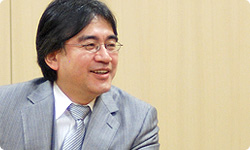
Yes, that’s how it is. In that sense, I think ‘timing’ is really important. Especially as hardware gets more advanced and you have more expressive power to display even the most detailed of characters’ emotions, getting the timing wrong can make the player feel extremely pushed around... In some cases they end up feeling ‘this isn’t my character’. That’s why, as Sakamoto-san said earlier, I think that ‘foreshadowing’ – informing players of episodes happening to supporting characters and so on - is very important.
I see.
Furthermore, going back to what I was saying earlier about opening the castle door: I think that players would hate it if nothing happened when they opened the door.
Because players open the door expecting something to happen, don’t they?
Exactly. So when the door opens with a thud, as well as playing the dun-dun-dun-duuun music and displaying a message saying ‘this is ___ castle’, that is the moment for adding some kind of story. That was the thing I was most aware of on this project.
What kinds of things do you most want to convey with the story for The Last Story, Sakaguchi-san?
It’s the kind of story that takes a long time to tell, so there are several elements I want to convey to the player. This time, however, I was focusing on gameplay elements more than the story so, for example, the player’s character sometimes exchanges small, irrelevant talks with other characters while moving from one place to another. For example, as you’re moving around you might hear someone say ‘hey, why can’t you notice this smell?’. Through dialogue like this, players really become aware of the existence of their companions. One of the things I’d like to convey in this story is the strong relationships players have with the companions who accompany them for whatever reason. The players might feel, for example, ‘These guys are great.’ or ‘I’d do anything for these guys.’
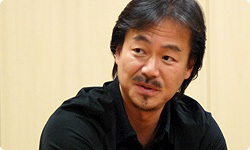
What about you, Sakamoto-san?
The theme I thought I’d explore in the previous Metroid games was that although humans always make mistakes and think selfishly, we are not all bad after all. The theme for this game was something similar, too.
I see. Thank you both very much. To finish with, how about you both give each other a bit of a shout out?
I think that both Sakaguchi-san and I are trying to do similar things when it comes to the challenge of ‘telling stories through games’. Of course, our world views and the game genres we work in are different, and we use different angles and methods, but that’s what makes working life interesting, and I have a real personal interest in Sakaguchi-san’s games. I’m looking forward to hearing the various impressions and reactions – ‘this part was good’, that kind of thing - of the many people who will play The Last Story.
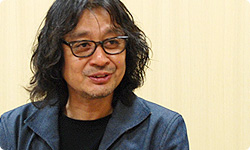
My game is coming out a little bit later, but Metroid: Other M is released very soon, isn’t it?
Yes, on September the second (Japanese release date).
After all we talked about today, including the story, what I felt more than anything was ‘I want to play the game’. The other thing I felt today was shock at finding out about your connection to the Hamtaro game.
(laughs)
When I saw the Metroid: Other M trailer, a very serious woman appeared... She was being shown through the window of a space ship, talking about ‘my destiny...’ – it was very serious, wasn’t it?
Oh yes, super serious.
I thought ‘why is the man behind Tomodachi Collection doing this?!’
(laughs)
As I said earlier, my family are fans of this other type of game you make, Sakamoto-san, so I’m really looking forward to your next step in that kind of direction as well.
I see. Well, that is another one of my themes, so...
Of course, I’m really looking forward to Metroid: Other M too, and from now on I’m definitely playing both types of Sakamoto-san game.
Today we started by talking about the strange connection between you, and though you’ve both followed your own paths, I felt that you actually had an awful lot of things in common. Thank you very much, both of you.
Thank you very much.
